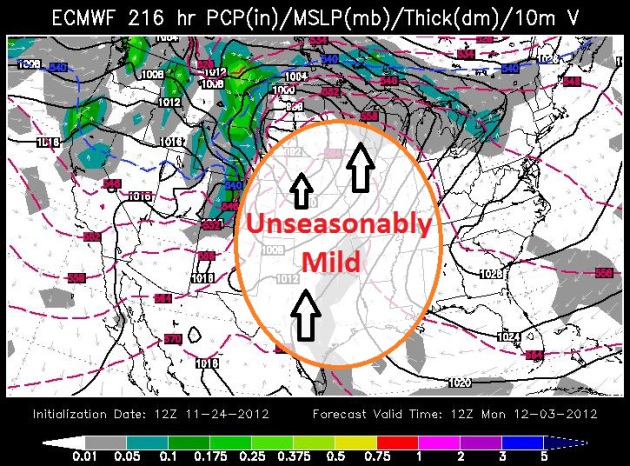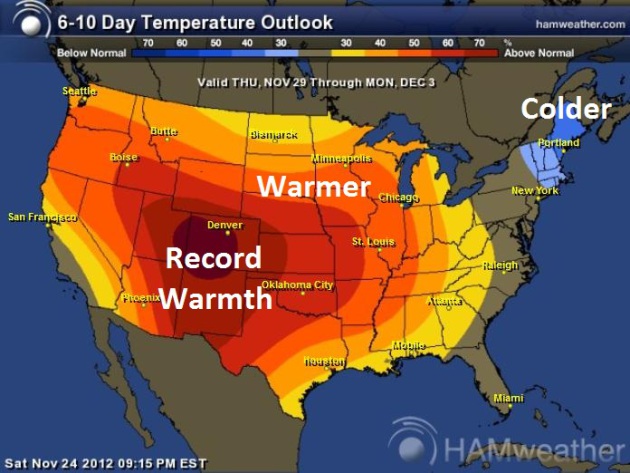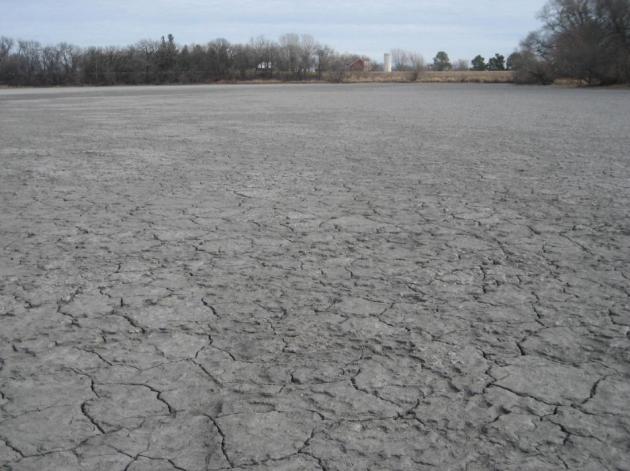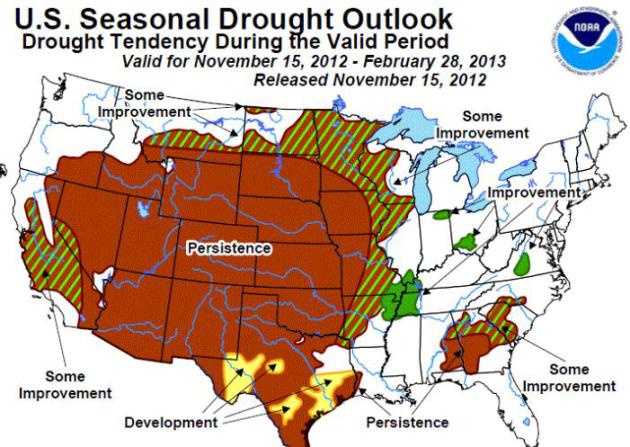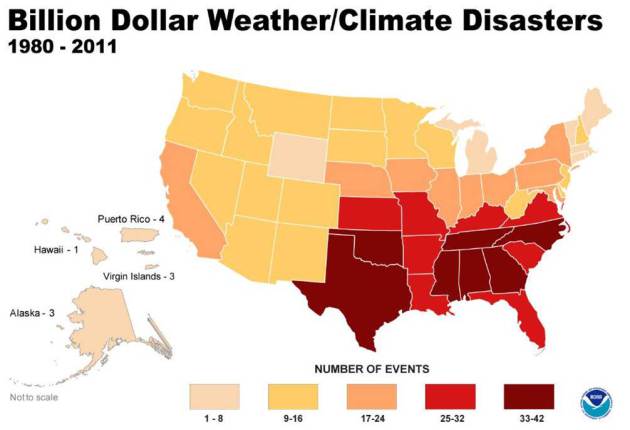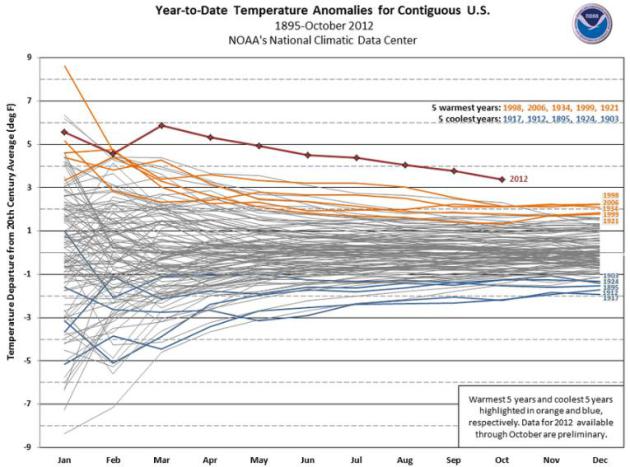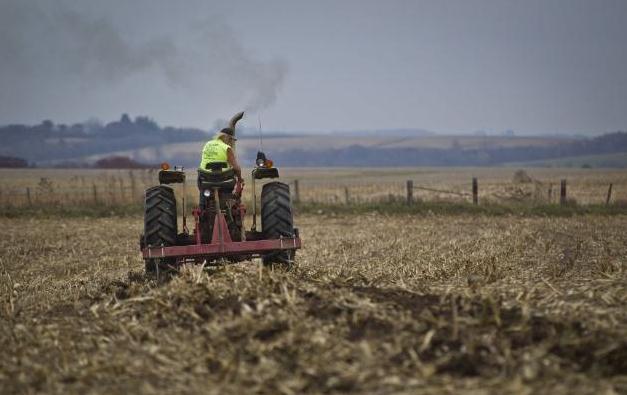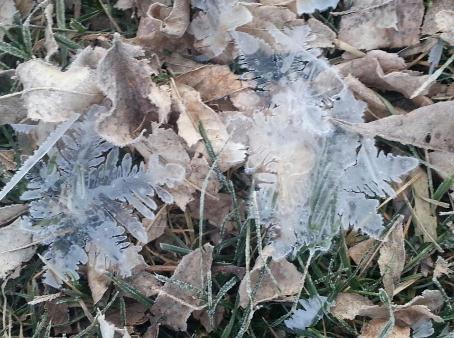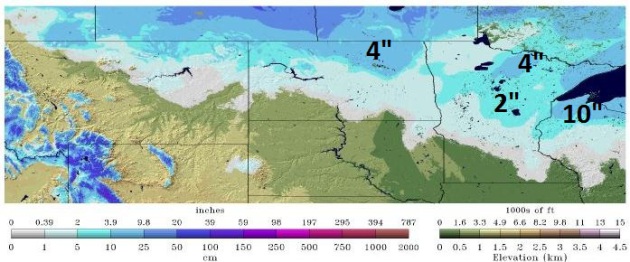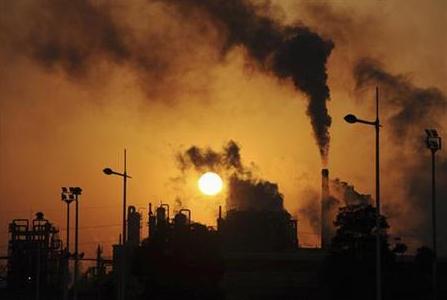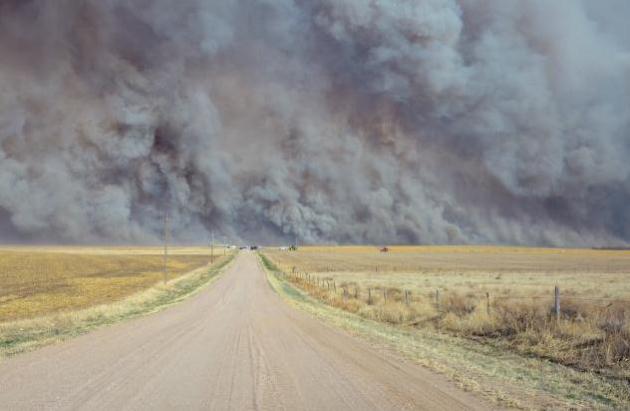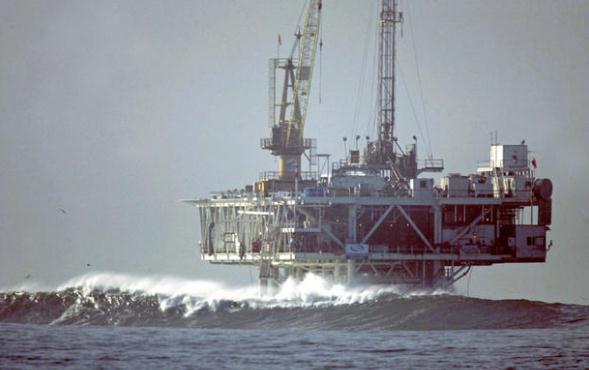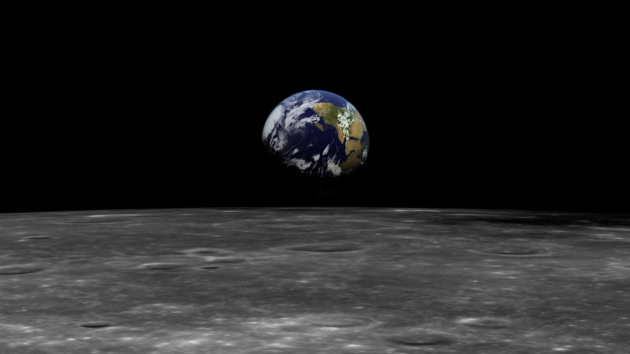December Puddles
Are you receptive to new data. Do you have an
open mind? Or are you tempted to cherry-pick nuggets that support your
point of view? In my travels I find that younger people, as a rule, are
trying to sort out the signal from the noise. Is the crazy weather we've
been witnessing unusual, or part of a larger pattern?
I was skeptical of climate change in the 80s; by
the mid-90s I was witnessing things on my weather maps that couldn't be
explained away as normal weather. I was reacting to data - facts on the
ground.
2012 is part of this crazy quiltwork of curious
trends: flowers blooming in March & the warmest year on record,
nationwide. Now I'm seeing more possible evidence of a shift in the
pattern: weather models are printing out 50s & rain for the first
week of December. Rain falling within 3 weeks of the Winter Solstice?
OK.
Dr. Mark Seeley reports midwinter rain and ice has increased by 4X in Minnesota in a generation.
Where's the snow? Will this be another bleak winter for snow lovers? Between drought and warming I'm starting to think so.
Seasonably chilly weather holds into Friday, puffs of chilly air; no storms expected.
Next week? "Octember".
Another data point.
"Octember". The models are consistent - the next 5
days will be chilly, temperatures averaging a couple degrees below
normal. But a massive Alaskan low pressure system is spinning off a
series of Pacific storms, each one capable of pumping unseasonable
warmth northward. The first surge of 50+ air arrives Sunday and Monday
of next week; highs may reach the low to mid 50s, nearly 20 degrees
above average. We start December with a significant thaw, but little
rain is expected right now. 12z Monday forecast (December 3) from WSI.
Another Wintery Intermission. Temperatures begin to
thaw by late week; 40s by Saturday, a shot at 50s a week from today. No,
I do not see a steady treadmill of arctic fronts pushing south into the
USA, one after another, at least not yet. All bets are off for
mid-December, but we start the month on a mild note. Map: NOAA CPC and
Ham Weather.
Paul,
I am a longtime reader of your blog. Thought you would be interested to
see these pics I took while visiting my parents for Thanksgiving down
in SW Minnesota outside of Fulda. Where I am standing usually has 4
feet of water. The drought down in that area is as bad as I have seen.
Anyway, keep up the blog!
Tom Braun
Plymouth, MN
Thanks
Tom - your photo sums up the drought better than any map I could
possibly dig up. All of southwestern Minnesota is in extreme drought
right now, with little improvement in sight. Once the ground freezes up
(next week's thaw may delay a hard freeze until mid-December) moisture
can't sink into topsoil, where it's needed. That's a problem. Right now I don't see any potential for improvement in Minnesota's drought until early 2013.
Drought Outlook. NOAA's
drought forecast
thru the end of February shows "persistence" across southwestern
Minnesota (meaning no improvement in the drought). Some improvement is
predicted for the rest of Minnesota, but we may have to wait until late
winter, early spring, for the shift in the pattern necessary to put a
serious dent in the drought.
Relative Weather Risk. Don't let any relatives
living in the southern USA give you a hard time about Minnesota cold
fronts. There have been 3-4 times more billion dollar weather and
climate disasters across the southern USA since 1980 than Minnesota or
Wisconsin. Why? Hurricanes. From Texas to the Carolinas, floods and
tornadoes are prevalent, but these states, close to the warm waters of
the Gulf of Mexico and Atlantic, are also in "Hurricane Alley" -
compounding the relative risk and odds of weather-related disasters.
Source NOAA.
2012: Off-The-Scale Warm. NOAA released the latest
data for the lower 48 states, showing that it's pretty much a sure bet
that this year will be the warmest ever observed in the USA, warmer than
1998, 1999 and 2006.
Those Bugs "Are Going To Outsmart Us". Yes, we have enough to worry about, but in case you missed this important story at
The Star Tribune about how crops are becoming increasingly bug and pest-resistant, it's worth a read. Here's an excerpt: "...
It
is what scientists and environmentalists regard as one of nature's
great ironies: Fifteen years ago, genetically engineered seeds promised
to reduce the amount of poisons used on the land, but today they are
forcing farmers to use more -- and sometimes more toxic -- chemicals to
protect their crops. Why? Because pests have done what nature always
does -- adapt. Just as some bacteria have become resistant to
antibiotic drugs, a growing number of superweeds and superbugs in the
nation's farm fields are proving invulnerable to the tons of pesticides
that go hand in hand with genetically modified seeds..."
Photo credit above: "
Danny Serfling tilled a field on his
farm in Preston, Minn., in late October. He lost part of this field
and a whole other one to rootworm. The solution? “We will have to use
more insecticide,” he said." Renee Jones Schneider, Star Tribune.
Mega-Flakes. I don't think I've ever seen anything
like this - and frankly, I don't have a good explanation. Anyone out
there have a clue what this is? Details via KARE-11: "
Thank you Jody
T. from Lonsdale for sharing this great picture! Jody says he saw
these giant frost flakes in his yard this morning."
Where's The Snow? As of Friday, November 23rd,
Milwaukee has gone 264 days since the last day with measurable snow,
which is the 4th longest streak on record. The last time Milwaukee had
measurable snow was on March 4, 2012, when 0.9 inch was measured.
Only a trace of snow is expected today with no snow expected on
Sunday. Hence the current streak should climb to 3rd place this
weekend. Source: NOAA.
* snowcover map above courtesy of NOAA's
National Snow Analysis,
showing 2" on the ground from St. Cloud to Brainerd, as much as 4" near
International Falls. My friend in Herbster, Wisconsin reports 10-12" of
new (lake effect) snow in his yard.
Too Early To Write Off Warm Fronts. Seasonably
chilly weather lingers into Friday of next week as a family of weak
clippers drag cooler air southward out of Canada (Monday the coldest day
in sight). But the ECMWF forecast highs (red, in Celsius) show an
upward blip in about a week;
the latest run showing highs close to 60 on December 3. Graphic: Iowa State.
A Lazy Sun. The sun just barely rose above the
horizon Saturday in Delta Junction, Alaska, illuminating a smear of
cirrus clouds floating overhead, resulting in a spectacular shot,
courtesy of Facebook and
Birch Leaf Photography.
The Economics Of Wasted Leftovers. The statistics are daunting, according to this story from American Public Media's "
Marketplace"; here's an excerpt of an eye-opening story: "...
The Natural Resources Defense Council
estimates that Americans trash 40 percent of our entire food supply.
For a family of four, that works out to more than $2,000 a year. Dana
Gunders is a food project scientist at NRDC. She puts the numbers in
perspective. “Imagine going to the grocery store, buying three bags of
groceries, dropping one in the parking lot, and not bothering to pick
it up," she says. "That’s essentially what we’re doing in our food
system today." Gunders is talking about all the food we waste. From
veggies left to rot in the fields because they’re not exactly the right
shapet to uneaten food on restaurant plates. And, of course, forgotten
leftovers that morph into something monstrous in the refrigerator..."
A Hybrid Tank? Why not. Reducing dependence on traditional fuel sources only increases resiliency and lowers overall risk.
Gizmag.com has more details: "...
The
GCV carries three crew and nine squad members inside its steel-core
hull and boasts an integrated electronic network capability and embedded
intelligence, surveillance and reconnaissance equipment. However, the
centerpiece of the vehicle is its simplified drive train. The GCV is
propelled by an Hybrid Electric Drive (HED) developed by the
partnership. It puts out 1,100 kW of electricity, has fewer components,
and lower volume and weight than current power plants. Being an
electric drive, it generates high torque at start, smoother low-speed
operation and can run silently – an advantage in night operations...."
Major Weather Events on November 24 - courtesy of the
Twin Cities National Weather Service:
1977: Record lows were set across
central Minnesota with lows in the teens to single digits below zero.
Montevideo had the coldest temperature of 18 degrees below zero along
with Long Prairie at 16 degrees below zero.
1820: Ft. Snelling is in the middle of a three-day blizzard that would dump nine inches of snow.
Climate Stories....
"
The amount of greenhouse gases in the atmosphere reached a new
record high in 2011, according to the World Meteorological
Organization. Between 1990 and 2011 there was a 30% increase in
radiative forcing – the warming effect on our climate – because of
carbon dioxide (CO2) and other heat-trapping long-lived gases." - WMO, the World Meteorological Organization. Source
here.
Scientists Say Freakish Weather Could Become The Norm Due To Global Warming. Here's an excerpt from a story at
The New York Daily News: "
The
U.S. was blasted by monster storms and scorched by record heat waves in
2012 - freakish weather that could become more commonplace because of
global warming, scientists warn. But climate activists hope the
destructive weather could have a side benefit of forcing President Obama
off the bench when it comes to to the issue of climate change..."
Photo credit above: AP/Tony Rayle/Yuma Sun
Fight Against Climate Change Blocked By Luddites At Big Oil: McQuaig. Here's a clip from
thestar.com: "...
The
news on the climate front is devastating. In a report earlier this
month, PricewaterhouseCoopers (PwC), one of the world’s largest
accounting firms, states the world has “passed the critical threshold”
and that current carbon reductions amount to “a fraction of what is
required against the international commitment to limit global warming
to 2 degrees Celsius.” In order to keep within that limit by 2050, the
accounting firm says the world will have to dramatically accelerate its
annual pace of carbon reduction — to a rate never before achieved, and
then continue at that rate “for 39 consecutive years.” No problem!
That’s if we want to keep warming to just 2 degrees Celsius — which may
be too high. So far, we’ve warmed the planet by only 0.8 degrees
Celsius — and yet that little bit of warming packs quite a punch, as the
U.S. east coast learned last month..."
Photo credit:
Bruce Chambers/AP "Oil companies currently have proven reserves of oil, gas and coal worth $27 trillion."
Global Warming And The Emotional Divide. No one
wants to hear bad news. Believe me, I get that. Some days I feel like
Dr. Doom. After a correct call on Sandy, 7 days before landfall, one of
our corporate customers started referring to me as Nostradamus. Lovely.
But here's the thing: once you acknowledge the trends, the science, you
at least have a chance to adapt and mitigate, leveraging new
technologies (the market!) to make the problem better. We'll eventually
have to do just that, as a country (and planet), but some of us will be
dragged kicking and screaming (and denying the data) for a few more
years before we finally come to grips with a changing climate. And in
the process we may just reinvent our energy economy and set America on
the right course, competitively, for generations to come. Here's an
excerpt of an Op-Ed at
Madison County Journal that resonated: "...
So,
when global warming is brought up, I feel that same emotional click
inside. My first thought is, “shut up!” I want to put my fingers in my
ears. I think society generally shares that feeling. We don’t want to
hear it. But my gut is going hard the other way. And my gut doesn’t have
a “liberal” agenda unless it’s in front of a hot pizza. No, in fact, I
want the scientists who push global warming to be wrong. How could I
want anything else? It’s an awful prospect. And I certainly don’t want
future generations to face any such reality. But I get this sick feeling
these days about the weather. Beyond what scientists tell us, it feels
like it’s changing — and not for the better. And the
“nothing-to-see-here” mantra of global warming skeptics isn’t meshing
with that feeling I have watching these storms grow more and more
fierce, whether it’s spring tornadoes or fall hurricanes...."
Chasing Ice: A New Documentary Melts a Climate Change Skeptic's Heart. I've heard reports that this is a remarkable movie - hoping it comes to Minnesota soon. Here is an excerpt from a
Huffington Post story: "...
Going
to the world's most remote places and taking photographs was second
nature to James Balog, who developed a career with assignments for
National Geographic and others. But he was a climate change skeptic.
"It was hard for me to believe that people could affect something so
vast as the whole planet," he said. But he has a 24-year-old and an
11-year-old daughter and "I want to offer them, in my own way, a better
future," he said. He worried that he wouldn't have a good answer for
them if climate change turned out to be true and they asked him "what
did you do to stop it?" He decided to couple his "privilege as an
artist," with "his duty as a human being" by documenting the changes
occurring to glaciers..."
* more on the documentary "Chasing Ice"
here.
Grand Old Planet. Yes, you can be fiscally
conservative and still have some modicum of respect for the scientific
method. It is stll theoretically possible. Here's an excerpt from a Paul
Krugman Op-Ed at
The New York Times: "...
The
most obvious example other than evolution is man-made climate change.
As the evidence for a warming planet becomes ever stronger — and ever
scarier — the G.O.P. has buried deeper into denial, into assertions
that the whole thing is a hoax concocted by a vast conspiracy of
scientists. And this denial has been accompanied by frantic efforts to
silence and punish anyone reporting the inconvenient facts...." Image above: NASA.

